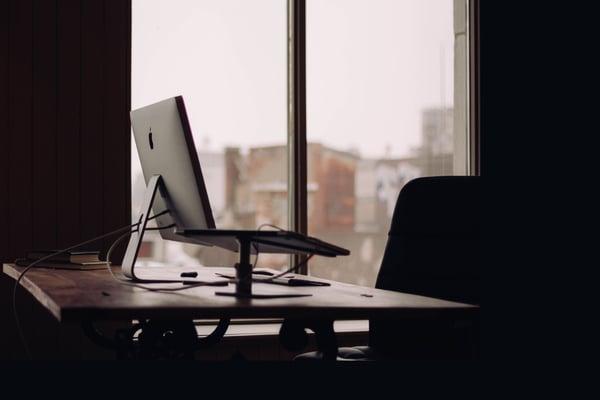If you’ve been in the business industry for a while, you know that the way we work has evolved over the last 50+ years.
In the '50s, Fordism and new technologies led to rows of desks and artificial lighting in our offices. In the '70s and '80s offices were concerned with being comfortable, ergonomic, and more experimental, which created a radical contrast to the famous office model of the '90s' cubicles. Those were motivated by function and utilitarianism, and it was the first introduction to hot-desking and sharing office spaces.
The arrival of the internet and the rise of related technologies opened up offices, emphasising collaboration, bringing the focus back to innovation, and introducing the idea of work-life balance. Since then, the use of technology has radically changed how we work and interact with office spaces and has contributed to everything from open offices, standing desks, flexible workspaces, hot-desking, and more. But, if you are having a hard time keeping up with the latest research on the best way to design your office, here is the only thing that you absolutely need to know: employees are not working at their desks anymore.

I don’t want to give you a history lesson, but if you think of the history of office design in the context of the social and cultural revolutions of the time, you might see that one fed the other. Our habits and routines are more often than not mirrored by what makes up our world. What does that have to do with the office of tomorrow? Well, our economy has shifted from manufacturing goods to the manufacturing information and services, and our priorities have changed. As we see more of an emphasis on health, work/life balance, smart cities, and integrated technologies, and as a new generation starts to fill up our workforce, it is not surprising to see that the way we work is changing to be more flexible.
In concrete terms, it means that an average of 2 out of 3 employees around the world work away from the office at least once a week, and that number is likely to keep on growing. For offices where each employee has their own working space, flexibility comes at a high cost. It is estimated that the annualized cost for just one workstation in one calendar year can be as much as $18,000. With 70% of people working remotely at least once a week, most desks are left unused 20% of the time. Using these numbers, a company with 1000 employees spends up to a whopping $2.520.000 a year on unutilized office space.
Hopefully, those numbers lead to a new appreciation for open-plan offices and hot-desking. That said, we know that not everyone works remotely and that when you are in the office, not having a set floor plan can be frustrating. Indeed, while solutions like hot-desking are economically interesting, for employees it can lead to a lot of wasted time. Employees spend an average of 30 minutes per week looking for a desk, another looking for colleagues, and when it comes to looking for a meeting room, the time spent yearly is the equivalent of 30 full-time jobs. Given these numbers, it is not surprising to see that research shows 35% of employees would like an app for booking and locating desks, meeting rooms, and co-workers. The rise of technology got us in this position, but it can also get us out of it.

MapsIndoors is a wayfinding solution on which a multitude of services can be integrated. Because MapsIndoors is built on Google Maps technology, the interface and functionality are familiar. That means the map of your office could be in the hand of all of your employees giving them A to B directions to navigate throughout the building. Through our solution, it can be possible to book a meeting room and get the best route to it from where you are standing, reducing the time looking for meeting rooms to just a few seconds.
You may think that indoor navigation only works to find a room or an office, but MapsIndoors’ positioning provider makes it easy to pinpoint the specific locations of devices, meaning you can find a colleague, and your turn-by-turn way to them, in just a few clicks. Those who need a quiet space completely free of interruption can adjust privacy settings to be sure they cannot be found.
This solution can be integrated into an existing application on mobiles or desktops, or used as a standalone application. If you only want employees to have access to your map, it can easily be password protected in your app. The seamless transition from outdoor to indoor makes it possible to get the exact route from your front door to an available desk, or to the colleague with whom you are meeting.
MapsIndoors’ capacity for integration makes it an adaptable solution that can grow and complement smart technologies, and respond to the needs of the future. This automatization of tasks means the time of your employees is spent on things that matter, and it makes the ever-changing evolution of offices much more manageable.
If you would like more information on how MapsIndoors can help your company improve outcomes, increase employee satisfaction, and free up resources, explore our indoor navigation solution for corporate offices and download our free eBook, Everyone Hates Your Office. And, if you have any questions, please don't hesitate reaching out to us.
March 19, 2019





.png)